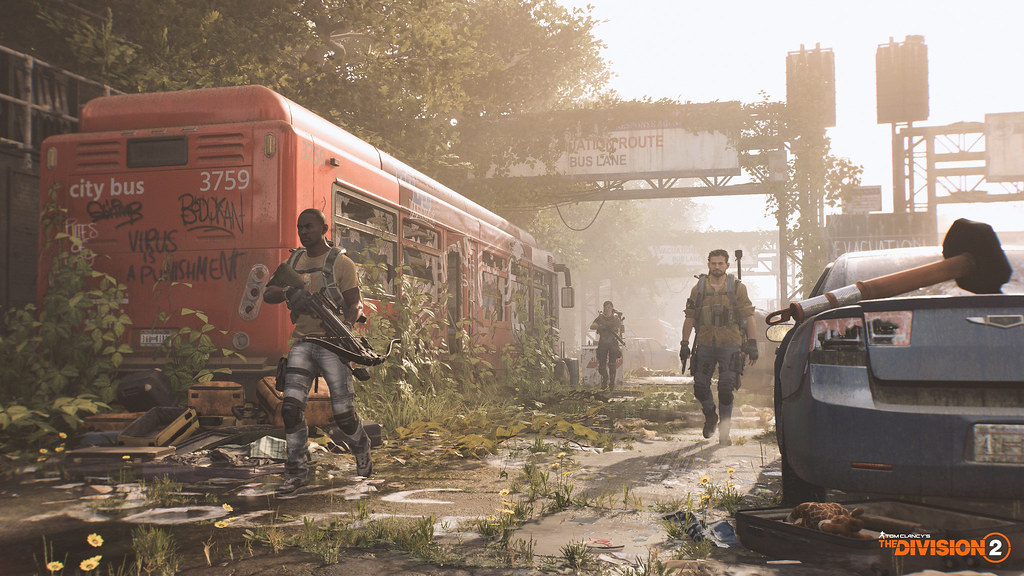And that’s not necessarily a bad thing

‘The Division 2’ private beta let players experience a war-torn Washington D.C.
A couple of weekends ago, people who either preordered or got invited to the private beta version of “Tom Clancy’s The Division 2” got to experience a chaotic post-apocalyptic Washington D.C., after the infamous “Dollar Flu” had spread from New York to the U.S capital.
This sequel takes place seven months after the events that happened in its predecessor, “Tom Clancy’s The Division.”
Not much else has changed from the original game, besides a definite upgrade in graphics and the seasonal change from winter in the original to summer in the sequel. Other than that, however, the game feels much like the first one, which is not necessarily a bad thing.
“The Division 2” is another looter-shooter game, but this time it was made by Ubisoft. While other looter-shooter games tend to be more science fiction based, this game is more on the realistic side with a few sci-fi elements to it.
In the game, players are a part of an elite agency called “The Division.” Ordinary citizens are activated at a moment’s notice to help bring stability to the country and fight back against people who seek to do it harm.
The beta release let players experience a tiny slice of what the game has to offer: a couple main story missions, a host of side missions, a settlement, some endgame content and the revamped “Dark Zone.”
The main story missions and side missions feel like they did in the first one. Players have some objectives they have to complete with hordes of different types of enemies in between.
The side missions feel similar, but they offer a little more variety with different types of objectives and locations.
A cool new feature comes with the settlements. In “The Division,” New York felt emptier with only the main base of operations in sight. In “The Division 2,” however, there are multiple settlements that you can help out and upgrade. In return, they will assist you on your journey.
Along with the new settlement feature comes enemy checkpoints and resource depots. Taking those can help the settlements, your base of operations (which is the White House) and give you more places to spawn when you inevitably die.
This feature makes the world of Washington D.C feel more alive than New York ever did, as well as giving you more to do. The settlements also supply gear and lots of side missions for your pleasure.
The endgame content offered was the ability to participate in the game’s version of raids. A couple of players fight harder enemies in a mission to get more loot. Many games of the same ilk have something similar, and the version included in “The Division 2” does not seem all that different.
The highlight of the original game comes back in this one: the Dark Zone, or DZ, the place where all the fun begins.
The Dark Zone is a player versus player area that you only need to venture into if you want the best of the best loot. Here, more difficult enemies and players that could backstab you at any moment are waiting.
The Dark Zone contains pieces of D.C. that are out of control and cannot be controlled, and the highest tier of loot is just sitting there abandoned. The only problem is you are not the only one trying to get it.
If you manage to kill enemies and avoid rogue agents (players who have killed other players are labelled this to keep you cautious), then you have to complete one final test. Players must go to an extraction zone and call a helicopter to come and get the loot. Everyone else in the DZ can see that a helicopter was called and can come and take your loot if you do not protect it well enough.
This creates a sort of cat and mouse game where you are waiting anxiously, hoping that no one comes to cause any trouble.
The beauty of the Dark Zone is everyone is on a level playing field. No matter what level your character is going into the zone, they will be made equal with everyone else until you leave. This prevents an overpowered, max-level player from just sitting and waiting for poor, defenseless players to destroy.
The Dark Zone also has its own leveling system. The more enemies you kill and loot, the higher your DZ rank will be, which in turn lets you get better loot. It’s a system that was great in the first game and is improved in the second one.
If you did not like the first game whatsoever, then you will not like this game. It does nothing to pull players that did not play the original one. It feels just like a newer version of the original game.
Again, this was only a review of a tiny slice of the game. The full game releases March 15. From this tiny slice, however, if you liked the first one, then “Tom Clancy’s The Division 2” is going to be a must buy for you.
